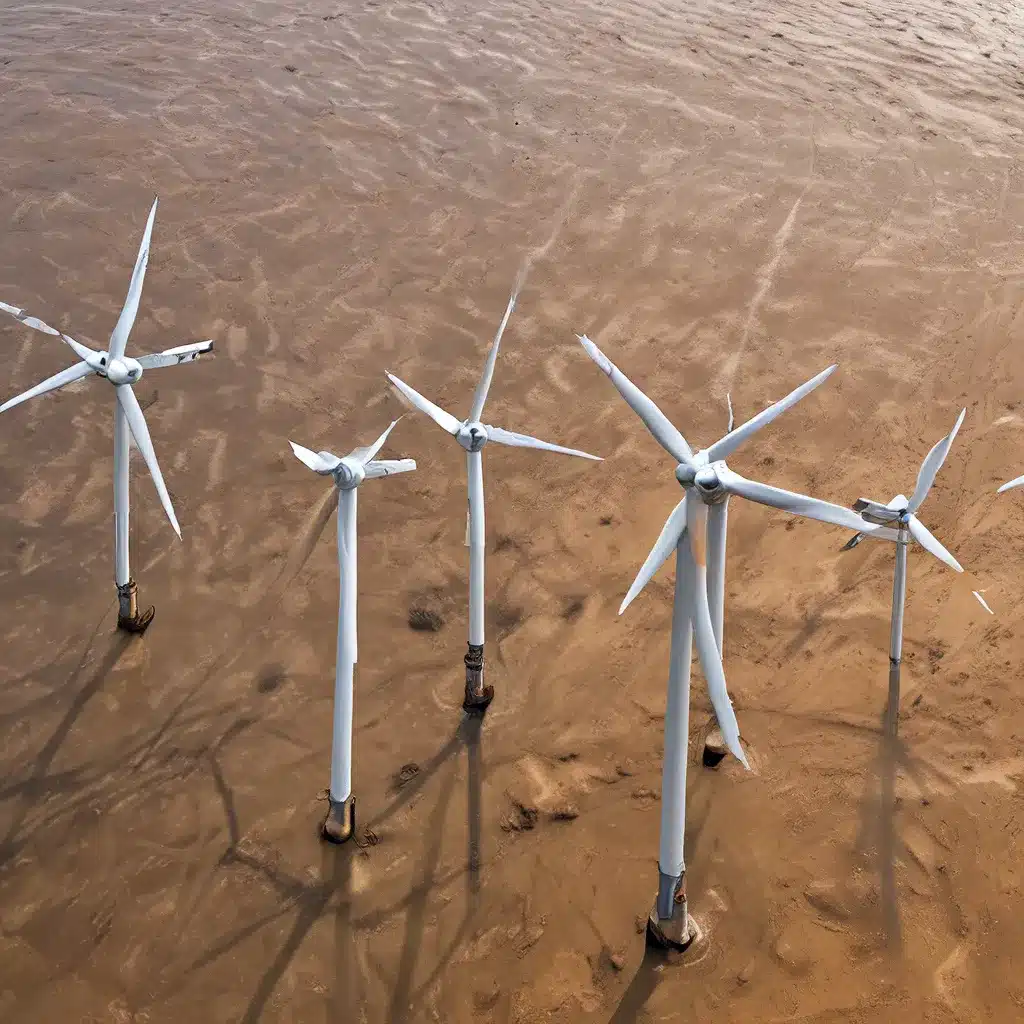
As an Alaskan native, I’ve witnessed firsthand the challenges of maintaining reliable, sustainable energy in our state’s harsh environments. From the bitter cold of the Arctic tundra to the relentless storms that batter our coastlines, the demands placed on our energy infrastructure are truly formidable. But through the ingenuity and perseverance of researchers at the National Renewable Energy Laboratory (NREL), I’m confident that we can overcome these obstacles and pave the way for a more resilient, clean energy future – not just for Alaska, but for communities around the world facing similar extreme conditions.
Building for the Arctic Onslaught
When it comes to energy efficiency and resilience, NREL’s Alaska Campus in Fairbanks is at the forefront of innovation. These researchers are tackling the unique challenges posed by the state’s extreme climates, from the Arctic tundra to the temperate rainforests, and developing cutting-edge solutions that can withstand even the harshest conditions.
One of the key focus areas is building envelope design. As NREL’s researchers have discovered, in an extreme climate like ours, energy efficiency is absolutely critical. That’s why they’ve pioneered the development of super-insulated buildings that balance energy efficiency, moisture management, health, and durability – all while minimizing the environmental impact.
These advanced building techniques incorporate the latest materials and methods, all of which are meticulously tested and evaluated in the lab before being deployed in real-world applications across Alaska. By collaborating closely with communities, government agencies, and industry partners, NREL is able to ensure that these solutions are not only energy-efficient, but also culturally appropriate and durable enough to stand up to the relentless onslaught of the elements.
Adapting to a Changing Landscape
Of course, as the climate continues to change, the challenges we face are only becoming more complex. One of the most pressing issues is the rapid permafrost thaw that’s destabilizing buildings and infrastructure across the circumpolar north. While communities scramble to adapt, NREL’s researchers are working tirelessly to develop innovative foundation systems that can remain resilient in the face of this shifting terrain.
From adjustable and moveable foundations to those that incorporate insulation or refrigeration strategies, these cutting-edge designs are carefully engineered to account for the unique soil conditions, building uses, and budgetary constraints of each project. By ensuring that the very ground we build upon can withstand the ravages of climate change, NREL is helping to secure the long-term viability of our homes, businesses, and critical infrastructure.
Breathing Easy in Airtight Homes
Another crucial aspect of building resilience in extreme climates is indoor air quality. As modern construction techniques have made our homes and buildings increasingly airtight, the risk of pollutants and excess moisture accumulating indoors has only grown. And in a place like Alaska, where the harsh weather often forces us to stay indoors for extended periods, this issue takes on an even greater significance.
NREL’s researchers have tackled this challenge head-on, developing innovative mechanical ventilation systems that can maintain the efficiency and comfort of our buildings while keeping indoor air clean and healthy. By balancing the many competing priorities – from energy efficiency to occupant well-being – these technologies are truly game-changers, helping to ensure that our living spaces remain safe havens, even in the face of the worst that Mother Nature can throw at us.
Harnessing the Power of Renewable Energy
Of course, no discussion of energy resilience in extreme climates would be complete without a focus on renewable energy solutions. And once again, NREL is leading the charge, using its Alaska Campus as a real-world testing ground for a wide range of clean energy technologies.
When it comes to heat pumps, for example, NREL is working tirelessly to overcome the challenges posed by icing and reduced efficiency in sub-zero temperatures. By studying these systems in their state-of-the-art 40-below cold chamber, the researchers are developing innovative strategies that can help unlock the true potential of electrification, even in the harshest of environments.
Similarly, NREL is tackling the unique hurdles faced by solar photovoltaics in Alaska, where limited winter daylight and heavy snow loads can significantly impact performance. Through the development of advanced battery and thermal storage solutions, as well as cutting-edge grid integration techniques, these researchers are paving the way for a future where renewable energy can thrive, even in the most unforgiving corners of the planet.
Connecting the Dots for Energy Security
Ultimately, NREL’s comprehensive approach to building and energy system research is about more than just individual technologies or solutions. It’s about creating a holistic vision for energy resilience that can withstand the rigors of extreme climates and safeguard the well-being of communities like mine.
By integrating cutting-edge building envelopes, ventilation systems, and renewable energy technologies, these researchers are working to minimize energy demands, enhance distributed energy resources, and ensure that power remains reliable and secure, even in the face of the most daunting environmental challenges.
And as they continue to push the boundaries of what’s possible, NREL’s Alaska Campus is serving as a beacon of hope and inspiration, not just for Alaskans, but for people around the world who are grappling with the realities of a rapidly changing climate. Because when it comes to securing our energy future, resilience is key – and these innovative researchers are leading the charge.
So, if you’re curious to learn more about NREL’s cutting-edge work in this space, I’d encourage you to explore their website and dive into the wealth of resources they have to offer. Who knows – you might just be inspired to join the fight for a more sustainable, resilient energy future, no matter where in the world you call home.

